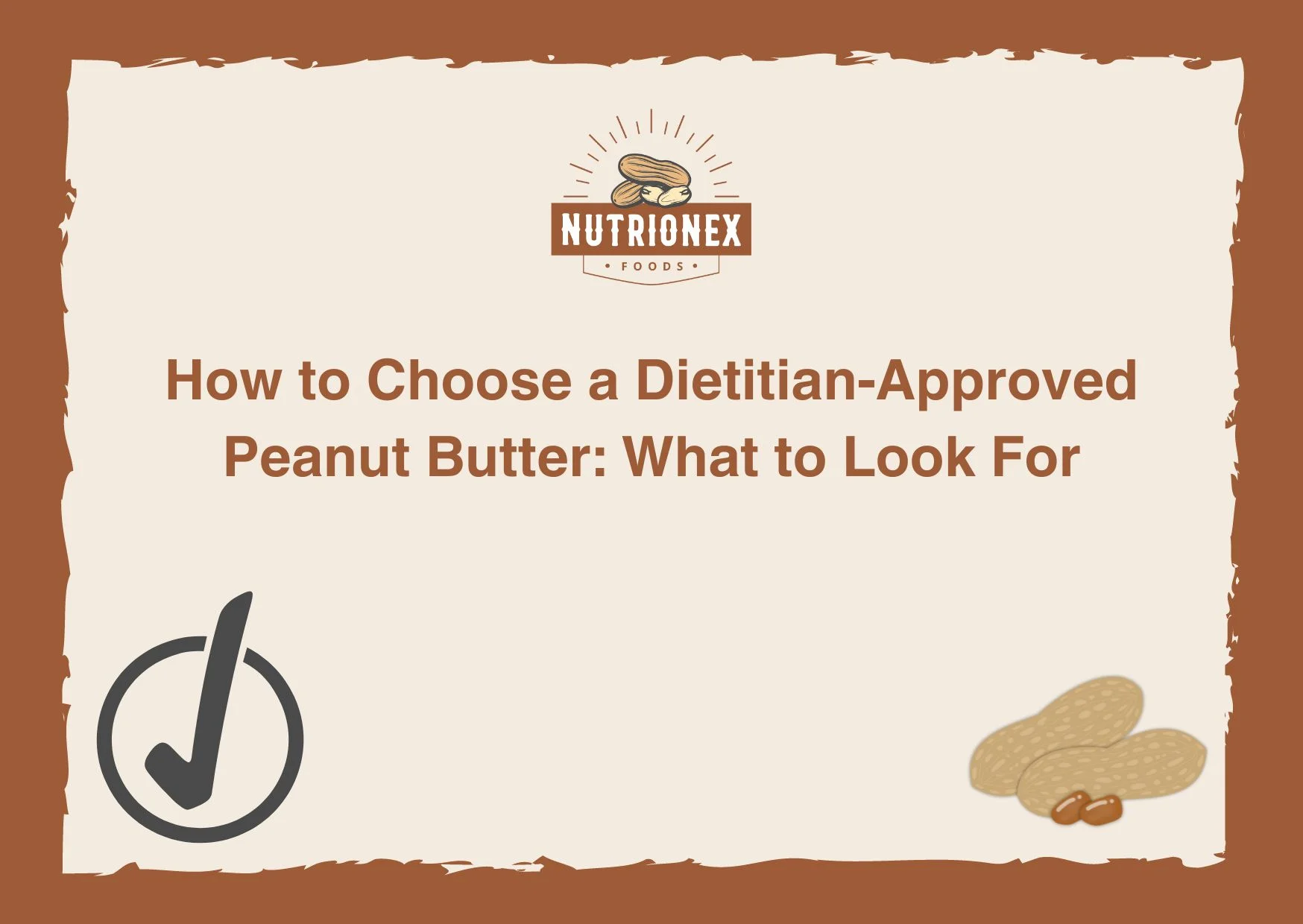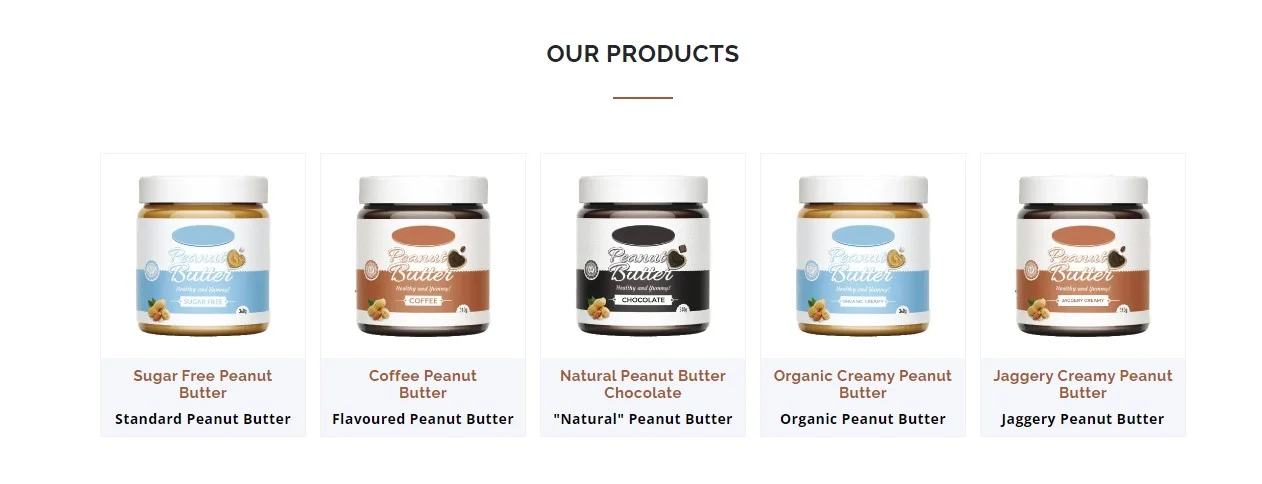
How To Choose A Dietitian-Approved Peanut Butter: What To Look For
Those that support healthy diets, but with the numerous types available, it becomes tricky to choose the right one, more so when dietitians give their advice.
We will take a look at the key things to remember while picking out a dietitian-endorsed peanut butter for you so that you make your choice wisely towards attaining health. Be it crunchy, smooth, organic, or natural, it's all peanut butter love. While you indulge in this creamy goodness, be sure to reach for a much healthier spread by being more mindful of the nutritional value and ingredient quality in peanut butter spreads.
.webp)
Key Takeaways
• Reach out for peanut butter that has a very short ingredient list that is rich in good fats and proteins.
• Stick to natural, organic, or unsweetened brands that avoid added sugars and other junk.
• Keep in mind your dietary needs and go for the macronutrient profile best for your goals.
• Experiment with different varieties—like crunchy or smooth—to find what works best for you.
• Consult with a registered dietitian on the right choice of peanut butter that best suits your taste buds and fits your goals.
The Nutritional Value of Peanut Butter
Whether one consumes natural or organic peanut butter, it tastes great and is very nutriments-rich. These nutrients help make a diet balanced and healthy.

Understanding the Macronutrient Profile
The primary ingredients of peanut butter include healthy fats, protein, and carbohydrates. A serving size of 2 tablespoons contains approximately 16 grams of fat, 8 grams of protein, and 6 grams of carbohydrates. Most of the fat from peanut butter comes from monounsaturated and polyunsaturated fatty acids, so-called good fats for the heart.
Identifying Healthy Fats and Protein Content
The key is choosing the right peanut butter. Added sugars and hydrogenated oils should be avoided. Natural and organic peanut butter are good since they preserve the goodness of the peanuts in them, along with their nutrients. Types like this pack have more healthy fats and protein than regular peanut butter.
| Nutrients | Natural Peanut Butter | Organic Peanut Butter |
| Total Fat (g) | 16 | 16 |
| Saturated Fat (g) | 2.5 | 2.5 |
| Monounsaturated Fat (g) | 8 | 8 |
| Polyunsaturated Fat (g) | 4 | 4 |
| Protein (g) | 8 | 8 |
| Carbohydrates (g) | 6 | 6 |
Knowing what's in peanut butter helps you make better choices. It supports your health and meets your nutritional needs.
Peanut Butter, Flavoured Peanut Butter, and Their Varieties
Nut butters are a serious business, with peanut butter sitting at the head of the table. You'll find everything from classic creamy and crunchy to many flavored types of peanut butter. Knowledge of the different varieties of peanut butter makes it easier to pick the best one.
Peanut butter: smooth or crunchy? The smooth variety is just plain smoother, whilst crunchy gives it an added texture with peanut pieces. It's all down to what you favour in food.
Now let us discuss flavored peanut butter. It is infused, now in days, with everything from chocolate to honey-roasted. Such flavors can top off your food in the best ways possible. Just make sure the extra ingredients are real and go well with the peanut butter.
While one is at it, choosing their peanut butter, one should check the label. Look for those made with few ingredients, don't have added sugars, and are high in good fats and proteins.

"The great thing about peanut butter is that it's not just a condiment – it's a nutrition-packed ingredient that can be enjoyed in a variety of ways."
Conclusion
We have explored the multifaceted world of peanut butter. From simple natural types to tasty flavors, the key is truly knowing what's inside. This can aid in selecting a peanut butter that will agree with a person.
The right one will depend on your health goals. Check the nutrition facts, focusing on healthy fats and proteins but without too much sugar and additives. This will help you to pick a peanut butter that will work in your diet.
While shopping, remember to choose a good-tasting and healthy peanut butter. There are so many nut butter out there, like almond or cashew. Find one that will improve your food and help you be healthy.
FAQ
1. What are the key factors to consider when choosing a dietitian-approved peanut butter?
Choosing a dietitian-approved peanut butter means looking at its nutrition, ingredient quality, and health benefits. Aim for a peanut butter with natural ingredients and few added sugars or oils.
2. What are the main macronutrients found in peanut butter?
Peanut butter is packed with healthy fats, protein, and carbs. It has a mix of monounsaturated and polyunsaturated fats and a lot of protein.
3. How do the different varieties of peanut butter, such as crunchy and smooth, compare in terms of nutritional value?
Crunchy and smooth peanut butters are both nutritious if they use high-quality, natural ingredients. Crunchy has small peanut pieces, while smooth is finer. Both are good choices.
4. What are some of the benefits of choosing organic or natural peanut butter?
Organic and natural peanut butters have fewer additives and no added sugars or oils. They might have more vitamins, minerals, and antioxidants than regular peanut butter.
5. How do flavored peanut butter options compare to the traditional natural varieties?
Flavored peanut butters can be tasty but check the ingredients. Some have added sugars or oils that lower their nutrition. Choose peanut butters with simple, natural flavors when you can.
